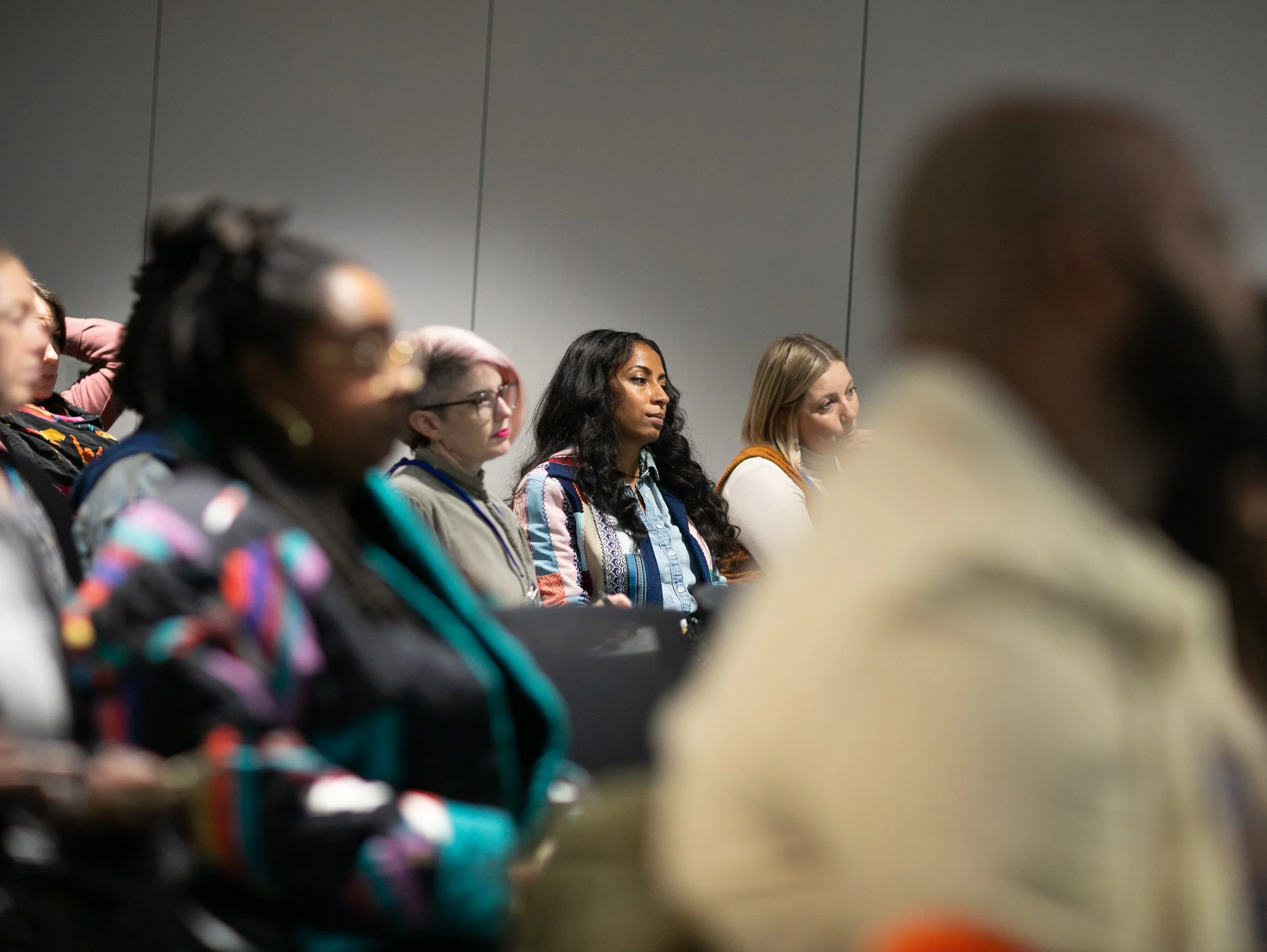Infrastructure to Meet This Moment: Cultural Workers as the Foundation of Creative Ecosystems
Myah Goff
As artists and organizers work to sustain creative ecosystems in a time of rapid change, this keynote invited cultural leaders to explore what infrastructure really means — not as buildings or grant systems but as the relationships and shared values that keep creative communities alive.
Moderated by writer and cultural strategist Janera Solomon, the panel featured Minneapolis-based choreographer Leslie Parker, North Dakota-based arts organizer Holly Doll (Anpao Win / First Light Woman), and Theatre Communications Group co-executive director Emilya Cachapero.
Attendees at the on-site workshop listening to the panel speakers.
Solomon began by tracing "infrastructure" back to its Latin roots: infra, meaning “below,” and structura, meaning “building.” That framing became the throughline for the discussion, as each panelist reflected on the invisible systems that allow artists to thrive.
Cachapero, a daughter of Filipino immigrants, related it to the Filipino concept of “kapwa,” a sense of shared identity and interconnectedness. Kapwa is “walking beside each other,” she said. “Your hopes, your challenges, your healing are intricately intertwined with mine. I can’t have any of those things if you don’t have them.”
She recalled joining a student strike at San Francisco State University as a teenager, showing up with a few poems in her pocket.
“I remember there was a moment where a lot of us were gathered in the Black Student Union and we were reading poetry to each other,” she said. “I thought, ‘Oh my god, this is brilliant. I want to do this every day.’”
That moment shaped her artistic path. At Theatre Communications Group, she continues building those connections — linking theaters, artists and communities across the country.
For Doll, infrastructure is rooted in her community, culture and stories — something that “needs constant tending to.”
Parker grounded her understanding of infrastructure in memory and place, specifically growing up in St. Paul’s historically Black Rondo neighborhood which was split apart by the construction of Interstate 94 in the 1950s.
“Growing up, I learned what it meant to have a full, sustaining community with everything we needed within it and then to have it taken away,” she said. “I was part of the inaugural Rondo Days Parade that was created so that our communities and our families could get together and be in conversation with one another.”
The conversation also turned to funding and sustainability. Doll spoke about learning to stretch every dollar while running a small grassroots organization. When she received a $20,000 grant, she made it last five or six years. Later, as a member of The Waterers — which distributes millions in funds to recipients in Minnesota, North Dakota, South Dakota and the 23 Native Nations — she helped allocate $3 million in grants. “It felt like a world-changing amount,” she said. “But in reality, it’s still not that much.”
Solomon noted how artists are often praised for stretching limited resources: “We’re very proud of it, right? We’re proud that we can make that $20,000 or $3 million stretch. It’s a skill set and I think it’s wonderful but it’s also challenging.”
Doll agreed. “We shouldn’t have to anymore,” she said. “I should have people look at my work and say, ‘You deserve more. You shouldn’t have to make that stretch. I want to invest in you so you don’t even have to worry.’”
When asked what motivates their leadership, the panelists spoke about interdependence, courage and care.
“There are so many people that came before me that I’m standing on the shoulders of and I’ve had great blessing to have incredible mentors and supporters in my life,” Cachapero said.
For Parker, leadership begins with self-awareness — a practice shaped by her experience as a dancer and improviser. She sees movement as a way to uncover stories and sustain cultural freedom while carrying tradition forward through innovation.
Doll draws strength from grief after the death of her father, recalling how family members supported her at his wake by brushing and braiding her hair, putting water to her mouth and hand-feeding her.
“These are family members I never knew and just in a moment of grief, I had people around me selflessly give support,” she said. “That experience is what I hold on to and I always refer to myself as a pillar of support rather than a leader.”
For these artists, infrastructure is built from care, sustained through community, and held together by the courage to keep showing up for each other, and for the work.

